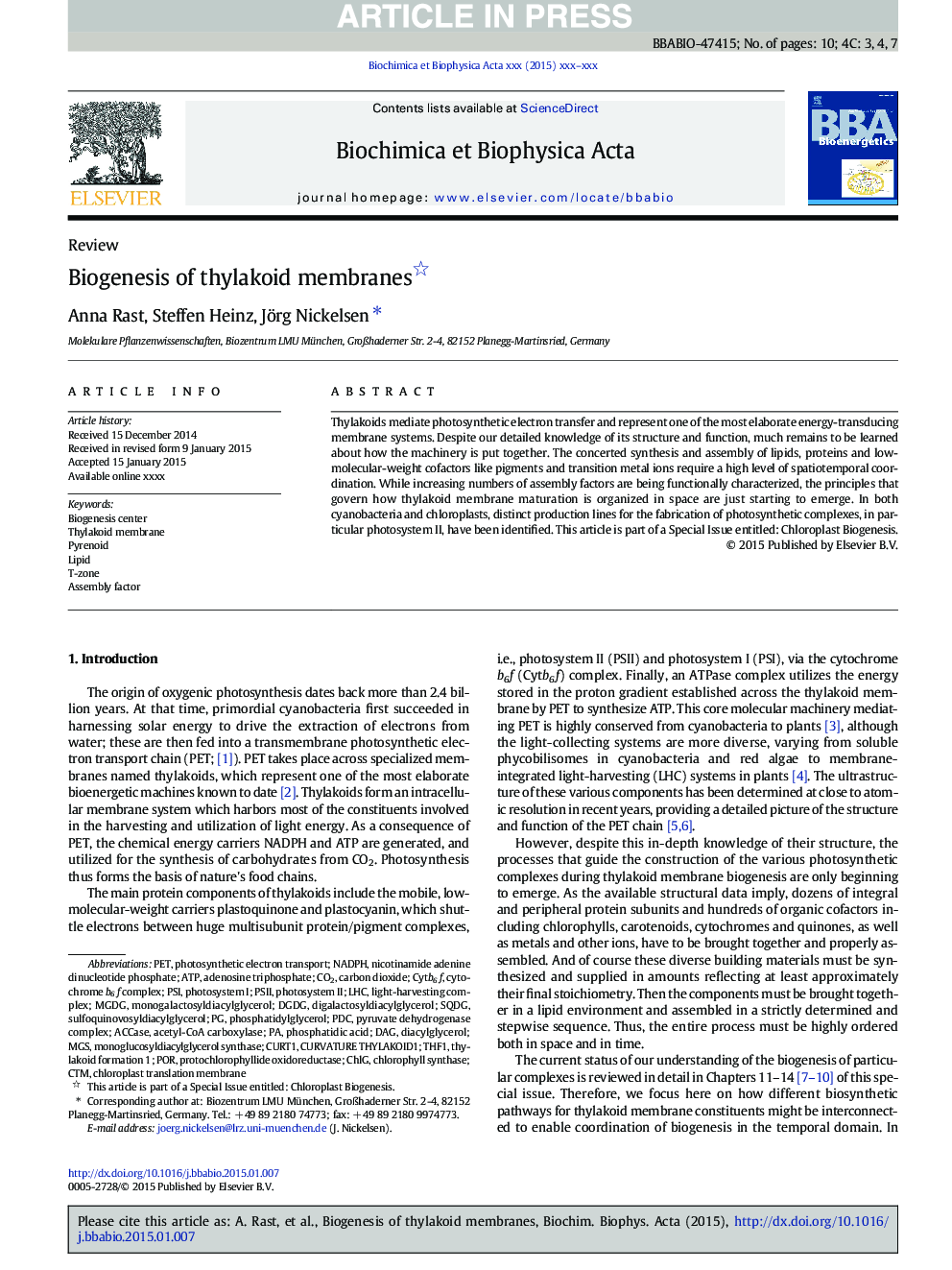| Article ID | Journal | Published Year | Pages | File Type |
|---|---|---|---|---|
| 10795373 | Biochimica et Biophysica Acta (BBA) - Bioenergetics | 2015 | 10 Pages |
Abstract
Thylakoids mediate photosynthetic electron transfer and represent one of the most elaborate energy-transducing membrane systems. Despite our detailed knowledge of its structure and function, much remains to be learned about how the machinery is put together. The concerted synthesis and assembly of lipids, proteins and low-molecular-weight cofactors like pigments and transition metal ions require a high level of spatiotemporal coordination. While increasing numbers of assembly factors are being functionally characterized, the principles that govern how thylakoid membrane maturation is organized in space are just starting to emerge. In both cyanobacteria and chloroplasts, distinct production lines for the fabrication of photosynthetic complexes, in particular photosystem II, have been identified. This article is part of a Special Issue entitled: Chloroplast Biogenesis.
Keywords
DGDGSQDGCTMPSIIACCasePORPSINADPHmonogalactosyldiacylglycerolMGDGdigalactosyldiacylglycerolPDCMGSprotochlorophyllide oxidoreductaseCytb6fAdenosine TriphosphateATPacetyl-CoA carboxylasephosphatidic acidLHCPhotosynthetic electron transportdiacylglycerolCarbon dioxideDAGsulfoquinovosyldiacylglycerolphotosystem IThylakoid membraneAssembly factorPhotosystem IIphosphatidylglycerolLipidLight-harvesting complexcytochrome b6f complexnicotinamide adenine dinucleotide phosphatePETpyruvate dehydrogenase complexPyrenoidCO2
Related Topics
Life Sciences
Agricultural and Biological Sciences
Plant Science
Authors
Anna Rast, Steffen Heinz, Jörg Nickelsen,
